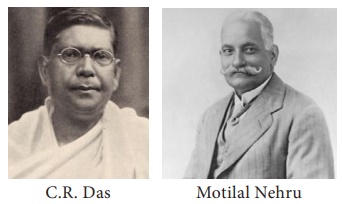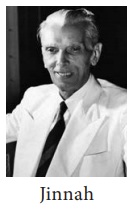India Nationalism: Gandhian Phase - Non-Cooperation Movement and Its Fallout | 10th Social Science : History : Chapter 8 : Nationalism: Gandhian Phase
Chapter: 10th Social Science : History : Chapter 8 : Nationalism: Gandhian Phase
Non-Cooperation Movement and Its Fallout
Non-Cooperation Movement and Its
Fallout
The
Indian National Congress approved the non-cooperation movement in a special
session held in Calcutta on September 1920. It was subsequently passed in the
Nagpur Session held on December 1920, Chaired by Salem C.Vijayaraghavachariar.
The programme of non-cooperation included:
1. Surrender of all titles of honours and honorary
offices.
2. Non-participation in government functions.
3. Suspension of practice by lawyers, and
settlement of court disputes by private arbitration.
4. Boycott of government schools by children and
parents.
5. Boycott of the legislature created under the
1919 Act.
6. Non-participation in government parties and
other official functions.
7. Refusal to accept any civil or military post.
8. Boycott
of foreign goods and spreading the doctrine of Swadeshi.
(a) No-Tax Campaign and Chauri Chaura Incident
Gandhi
announced a no-tax campaign in Bardoli in February 1922. These movements
greatly enhanced GandhiŌĆÖs reputation as a national leader, especially the
peasants. Gandhi made a nation-wide tour. Wherever he visited there was a
bonfire of foreign cloth. Thousands left government jobs, students gave up
their studies in large numbers and the lawyers gave up thriving practices.
Boycott of British goods and institutions were effective. The boycott of the
Prince of WalesŌĆÖ visit to India was successful.
On 5
February 1922 a procession of the nationalists in Chauri Chaura, a village near
Gorakhpur in present-day Uttar Pradesh provoked by the police turned violent.
The police finding themselves outnumbered shut themselves inside the police
station. The mob burnt the police station 22 policemen lost their lives. Gandhi
immediately withdrew the movement.
(b) Swarajists
Meanwhile
Congress was divided into two groups viz. pro-changers and no-changers. Some of
the Congressmen led by Motilal Nehru and C.R. Das wanted to contest the
elections and enter the legislature. They argued that the national interest
could be promoted by working in the Legislative Councils under Dyarchy and
wrecking the colonial government within. They were called the pro -changers. Staunch
followers of Gandhi like Vallabhbhai Patel, C. Rajaji and others, known as
no-changers, wanted to continue non-cooperation with the government. Despite
the opposition C.R. Das and Motilal Nehru formed the Swaraj Party on 1 January
1923, which was later approved by a special session of the Congress. Swaraj
Party members were elected in large numbers to the Imperial Legislative
Assembly and the various Provincial Legislative Councils. They effectively used
the legislature as a platform for propagation of nationalist ideas. In Bengal,
they refused to take charge of transferred subjects, as they did not want to
cooperate with the government. They exposed the true nature of the colonial
government. However, the Swaraj Party began to decline after the death of its
leader C.R. Das in 1925.

Dyarchy, a system of dual government introduced under the
Government of India Act 1919, divided the powers of the provincial government
into Reserved and Transferred subjects. The Reserved Subjects comprising
finance, defence, the police, justice, land revenue, and irrigation were in the
hands of the British. The Transferred Subjects that included local
self-government, education, public health, public works, agriculture, forests
and fisheries were left under the control of Indian ministers. The system ended
with the introduction of provincial autonomy in 1935.
(c) Constructive Programme of Gandhi
After the
Chauri Chaura incident, Gandhi felt that the volunteers and the people had to
be trained for a non-violent struggle. As a part of this effort he focused on
promoting Khadi, Hindu-Muslim unity and the abolition of untouchability. He
exhorted the Congressmen, ŌĆ£Go throughout your districts and spread the message
of Khaddar, the message of Hindu-Muslim unity, the message of anti-untouchability
and take up in hand the youth of the country and make them the real soldiers of
Swaraj.ŌĆØ He made it compulsory for all Congress members to wear khaddar. The
All India SpinnerŌĆÖs Association was formed.
(d) Boycott of Simon Commission
On 8
November 1927, the British Government announced the appointment of the Indian
Statutory Commission. Composed of seven members headed by Sir John Simon it
came to be widely known as the Simon Commission. It was an all-white commission
with no Indian member. Indians were angered that they had been denied the right
to decide their own constitution. All sections of India including the Congress
and the Muslim League decided to boycott the commission. Wherever the
Commission went there were protests, and black flag marches with the slogan ŌĆśGo
Back SimonŌĆÖ. The protesters were brutally assaulted by the police. In one such
assault in Lahore, Lal Lajpat Rai was seriously injured and died a few days
later.

(e) Nehru Report
The Simon
boycott united the different political parties in India. An all party
conference was held in 1928 with the objective to frame a constitution for
India as an alternative to the Simon Commission proposals. A committee under
the leadership of Motilal Nehru was formed to outline the principles on the
basis of which the constitution was to be drafted. The committeeŌĆÖs report,
known as the Nehru Report, recommended,
ŌĆó Dominion
status for India.
ŌĆó Elections
of the Central Legislature and the Provincial Legislatures on the basis of
joint and mixed electorates.
ŌĆó Reservation
of seats for Muslims in the Central Legislature and in provinces where they are
in a minority and for the Hindus in North-West Frontier Province where they
were in a minority.
ŌĆó Provision
of fundamental rights, and universal adult franchise.

Jinnah proposed
an amendment to the reservation of seats in the Central Legislature. He demanded
that one-third of the seats be reserved for Muslims. Tej Bahadur Sapru supported
him and pleaded that it would make no big difference. However, it was defeated
in the All Party Conference. Later he proposed a resolution which came to be
known as JinnahŌĆÖs Fourteen Points. However, it was also rejected. Jinnah who
was hailed as Ambassador of HinduŌĆōMuslim Unity thereafter changed his stand and
began to espouse the cause of a separate nation for Muslims.
Related Topics